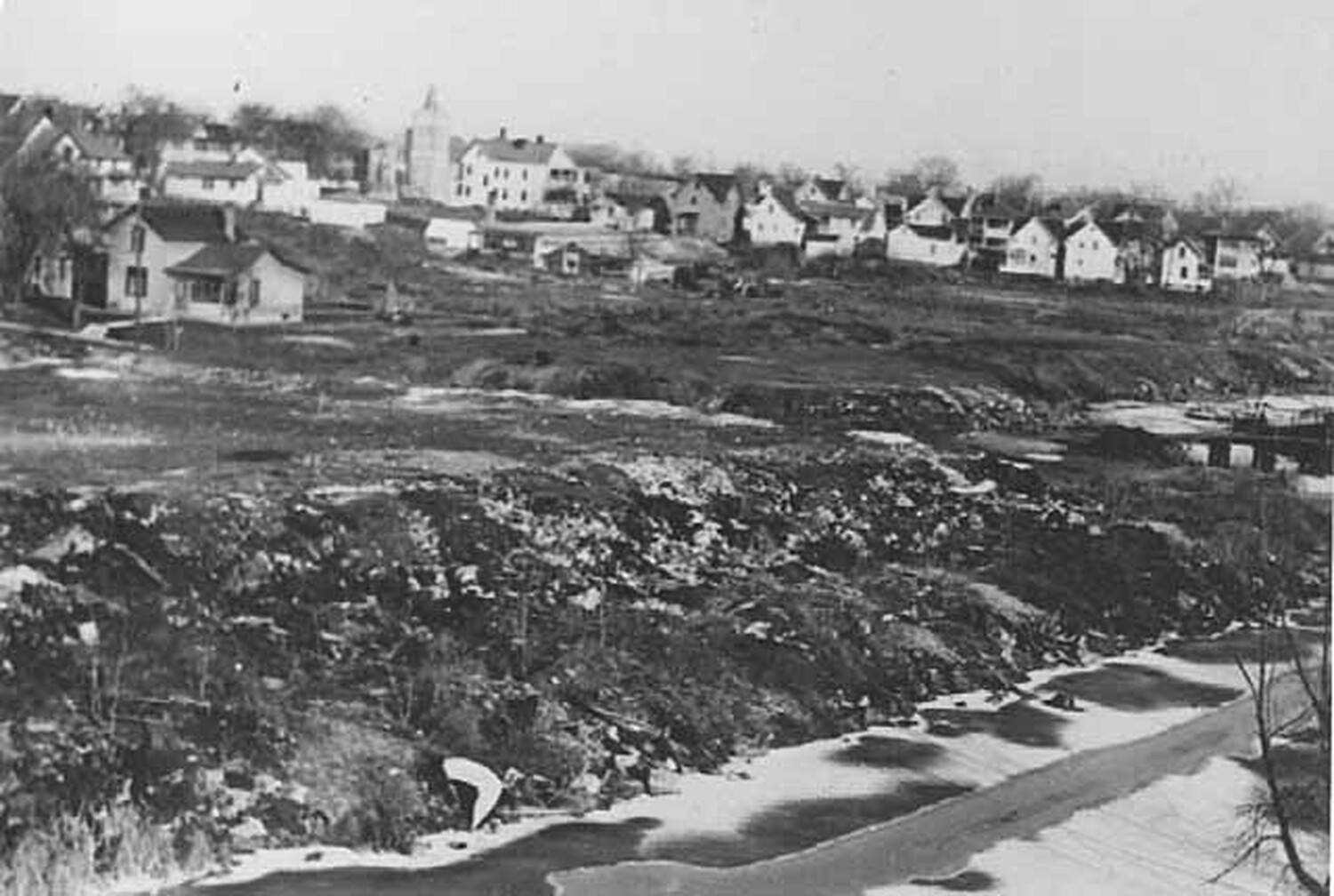
The secrets of hidden waterways
How manipulating a creek’s path shaped North Minneapolis neighborhoods
Trinity Ek is drawn to water. The U of M senior is fascinated
by the stories it tells, the way it shapes our landscape, and the role it’s
played in the development of cities. “There are so many stories to be told and
learned along waterways,” says Ek, an Olseth Scholarship recipient who’s
majoring in urban studies and minoring in geographic information science, and
environmental science policy and management. “That’s what I really love about
water.”
Last summer, her research mentor from the U of M’s River Life Program, Patrick Nunnally, suggested she delve into the story of Bassett Creek.

The creek, which runs 12 miles from Medicine Lake in Plymouth to the Mississippi River near the Plymouth Avenue Bridge in Minneapolis, is considered a “hidden waterway.”
Ek admits she knew nothing about Bassett Creek when she started the project. “In urban landscapes, we often hide water or find ways to work around it or completely remove it from the landscape,” she says.
By studying aerial and ground photos, demographic information, plat maps, development plans, and scholarly works, Ek saw how the creek changed over time and how it came to symbolize the intersection of “race, place, and hydrology.”
Natural beauty or nuisance?
Bassett Creek was once considered the northern cousin of Minnehaha Creek. But rather than designating the land around it as parkway, developers filled in sections of its swampy banks in the 1880s to make way for mills, railroads, and housing for workers. The creek became a dumping ground for garbage and industrial waste. “Most people saw Bassett Creek as a hazard,” Ek says.
More on the Mississippi
Last summer, Ek worked on a project for the Mississippi Park Connection, a nonprofit partner of the Mississippi National River and Recreation Area, telling the stories of women and the Mississippi River. She wrote about Fuji Ya restaurant’s Reiko Weston, who located her business at the site of an abandoned flour mill on Minneapolis’ riverfront, and Peggy Lucas, a developer who helped make the riverfront what it is today. The pieces are part of a larger collection.
“I got to learn more about the history of the Mississippi River by looking through a different lens,” she says.
Ek also led a project for the St. Anthony Falls Heritage Board, which promotes the interpretation and preservation of the historic Minneapolis riverfront, to map and catalog the signs, kiosks, and interpretive materials on the St. Anthony Falls Heritage Trail. She credits the Ecolab Experiential Education Scholarship through the U’s Institute on the Environment with allowing her to pursue the project.
In 1910, city planners built an underground tunnel to reroute the creek. But flooding was a perennial problem. Buildings and houses in the area, which had become home to marginalized communities, filled with water containing seepage from industrial waste and septic tanks after rains and snowmelt.
“In the long run, these hidden waterways expose themselves again. Water will find its way back, even if you try to hide it,” she says.
In 1936, buildings and homes along what’s now Olson Memorial Highway were torn down to make way for Sumner Field, Minnesota’s first federally funded housing project. But the creek once again had its way. Flooding continued to be problem, as the tunnel could no longer handle the water that came in from rain and snowmelt. Plus, the conditions made the ground beneath the Sumner Field homes unstable, causing the buildings’ foundations to crack and sink.
In 2001, when the Sumner Field homes were razed and replaced with Heritage Park, a 900-unit housing complex, the creek was “daylighted,” bringing it above ground. A state-of-the-art water system that prevents flooding was constructed.
The city’s 2007 master plan for the Bassett Creek Valley calls for redevelopment of housing, commercial space, and open space. It also suggests reclaiming the creek itself.
Ek wrote about Bassett Creek in Open Rivers Journal. She also plans to focus her senior thesis on ways infrastructure investments influence the racial wealth gap. “As city planners and others are reorienting our natural landscapes—creeks, rivers, and forests—there’s a really big opportunity to provide equitable development or gentrification,” she says. “It will be interesting to watch in the coming decades.”
Kim Kiser is editor of Legacy magazine.
Bassett Creek then and now














-2-jpg/1892-bassetts-creek-at-river-The-creek-has-been-straightened-and-buried-under-railroad-yards-in-1892-plat-map.-(John-R.-Borchert-Map-Library.)-2x1500.jpg)



